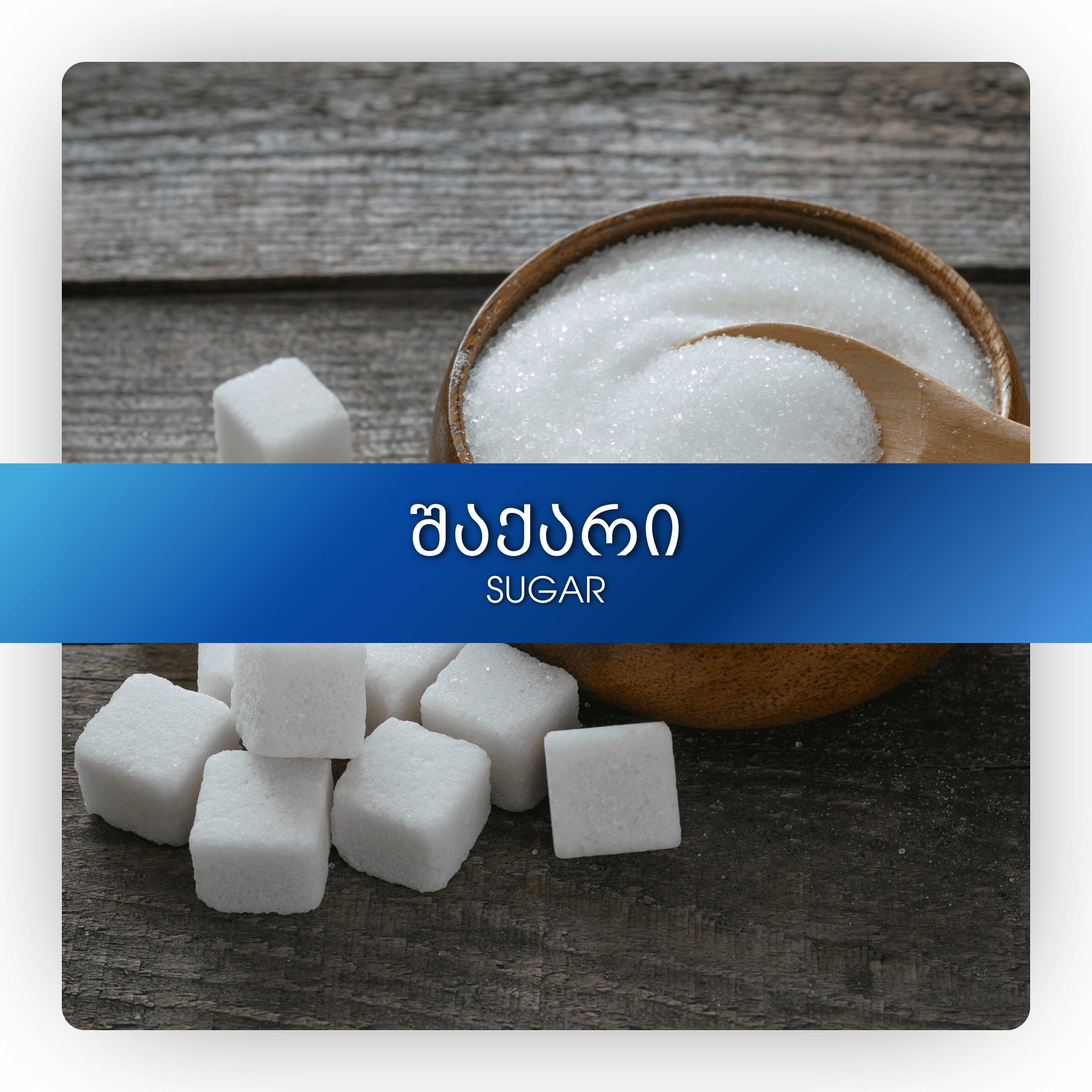Sugar
Sugar is a food product that takes an important place in a person's daily ration. The human body mostly recovers the spent energy at the expense of sugar.
Sugar is produced from sugar beet and sugar cane. It is produced in refined and powder form.
In the past, sugar was produced only from cane, which grows in countries with a warm climate, for example: India, China, Cuba, etc. Because of this, sugar was a rare and expensive product. In many countries, honey, sweet lime, maple and birch juice were used as a substitute for sugar. Half of the energy expended by a person is restored by carbohydrates, 1/3 of which is contained in sugars.
In 1747, the German chemist Andreas Sigismund gave a report to the Russian Academy of Sciences, where he stated that it was possible to produce sugar from white beets, although this did not cause much response, and only after the death of the scientist in 1784, his student Franz Carl Ahard began to cultivate sugar beets, and in 1799 he obtained from beets Sugar. In 1801, he opened the world's first beet processing factory, which worked for about 6 years. The factory was destroyed by fire in 1807.
Due to the high price, sugar was for a long time available only to the representatives of the rich class and was sold in pharmacies equivalent to silver.
Annually, 60% of the sugar produced in the world comes from sugar cane, and 40% from sugar beet. Currently, there are 1,500 cane and 1,000 sugar beet processing plants in the world, 800 of which are located in Europe.
The production of sugar from beets is mainly carried out on continuous units. Sugar includes several stages: first, the beetroots entering the factory are washed and cleaned. It is necessary to wash thoroughly so that the bulbs are completely free of soil, sand and grass seeds. Washing is done with special brushes. Washed beets are crushed on graters, hot water is added and a porridge-like mass is obtained. The sugar is washed out of the porridge in several stages on the continuous operation device. The sugar-containing liquid is fed to a diffusion unit, where it is processed into lime water.
The amount of dry matter in beetroot bulbs is 20-25%, of which 14-18% is sucrose, 2% is non-sugary substances. To remove the non-sugary substance, it is necessary to first treat the lime sugar solution in sulfuric acid (defecation) and then remove carbon dioxide (saturation). To remove color and acidity, the juice of the second saturation is treated in sulfur dioxide (sulphitation). The thickening of the juice takes place in two stages: in the first stage, the syrup is fermented in open evaporating boilers until the content of dry matter reaches 55-65%, then it is cooked in vacuum devices until the content of dry matter is 92-93.5%. The resulting mass is centrifuged and sugar is obtained in crystalline form with 0.8-1% moisture content. Sugar crystals are dried at 110℃ until 0.14% moisture content is reached.
Powdered sugar is sold in 0.5kg,1kg,2kg,20kg and 50kg bags
